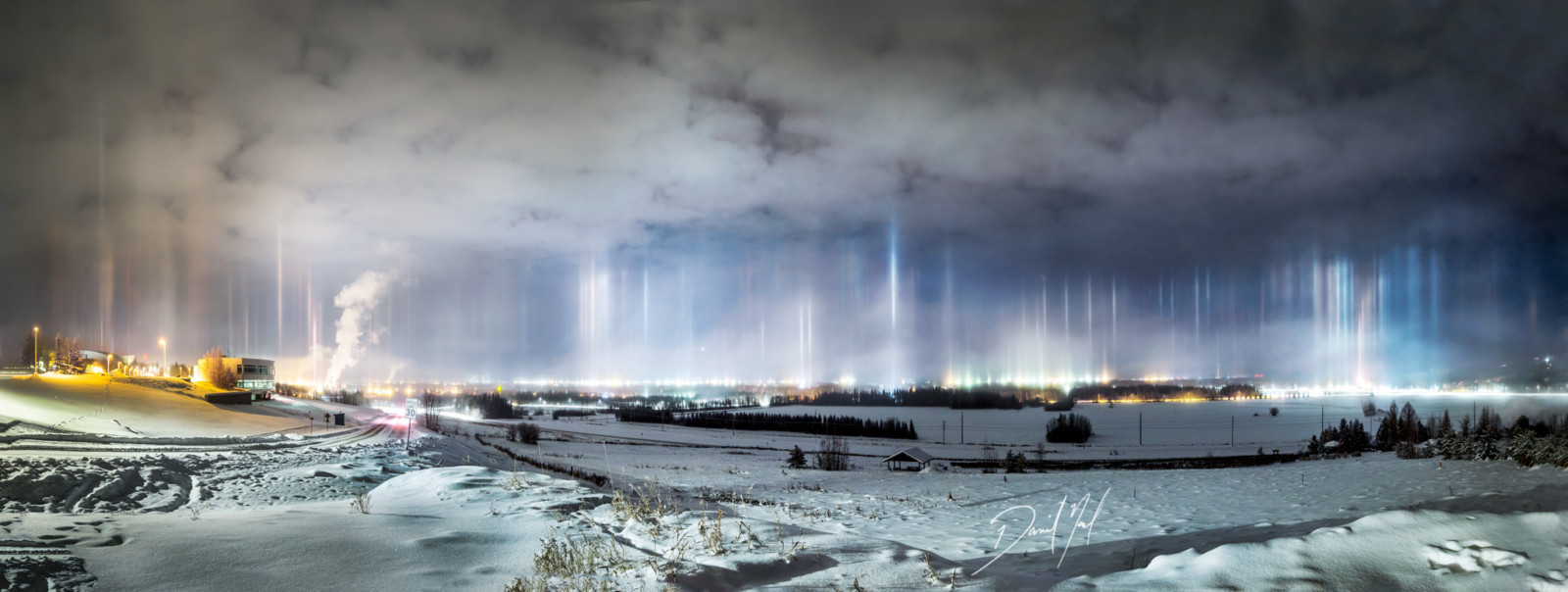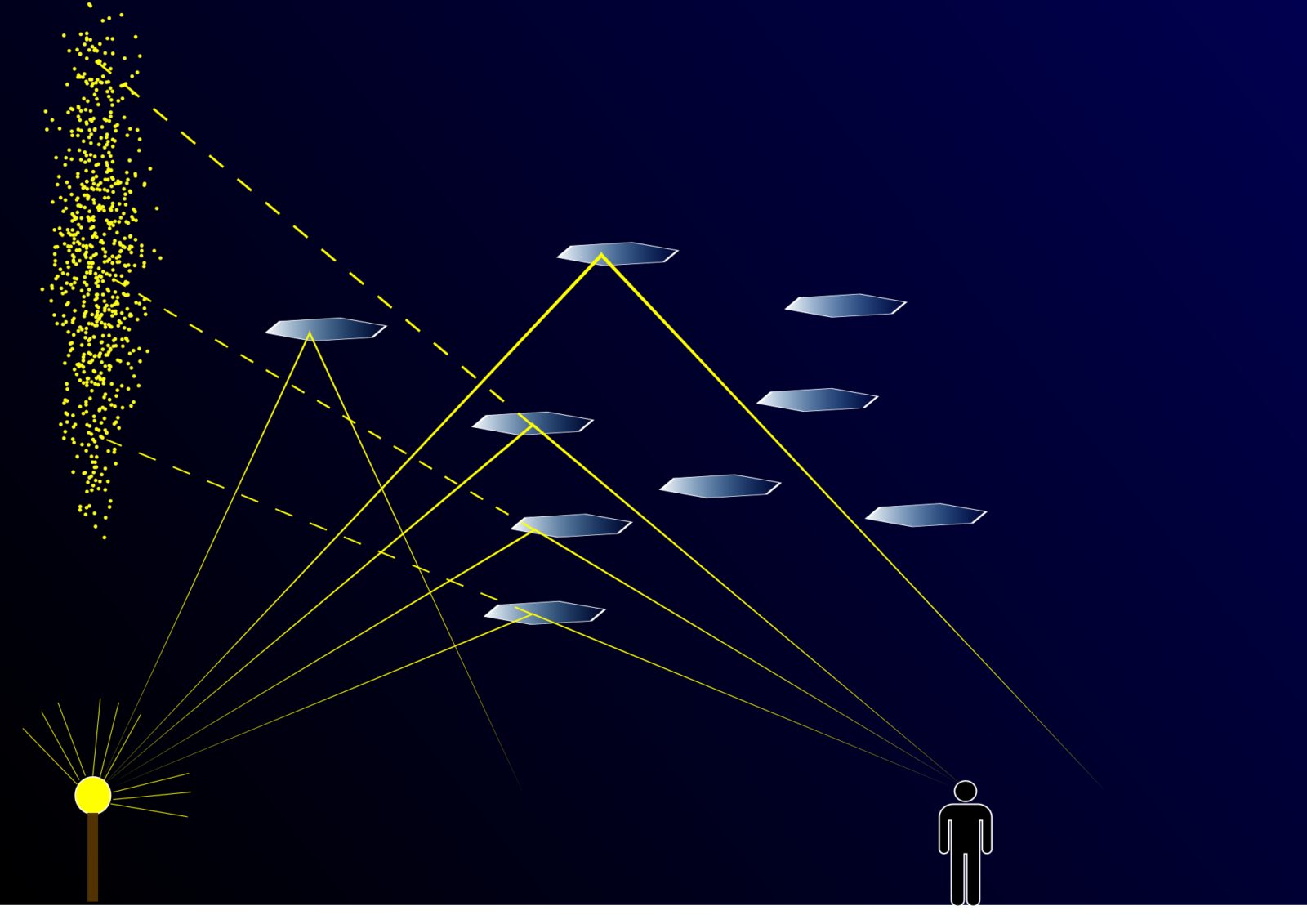
Fig. 1: Light pillars over Fairbanks, Alaska [Credit: Daniel Neal]
Light pillars form when ice particles are suspended in the air. These particles can be found at high altitudes in the form of cirrus clouds as well as near the surface in the form of blowing snow, ice fog or diamond dust.
The ice crystals of interest for the formation of light pillars usually have a flat and hexagonal shape, so that they tend to fall rather horizontally through the air. Each crystal is like a small mirror and reflects light sources positioned below (see Fig. 2). As the crystals are distributed throughout the vertical atmospheric column, the reflection appears like a pillar.

Fig. 2: Light pillar schematic [Credit: V1adis1av via Wikimedia Commons]
- there is a low light source: the setting or rising Sun, the Moon, artificial light
- the flat and hexagonal ice crystals are present in the air
As can be seen in our Fig. 1 and Fig. 2, the strength and colors of artificial light sources, such as street lamps, lead to very impressive light pillars! Good for Santa! It must feel like street lights in the sky! 🙂

Fig. 3: Light pillars at Cambridge Bay Airport. [Credit: E. van Lochem via Wikimedia Commons]
See you in January!
Further reading
- Light pillar explanation on NASA website
- More details on light pillars on Wikiwand
- More photos by Daniel Neal
Edited by Violaine Coulon

